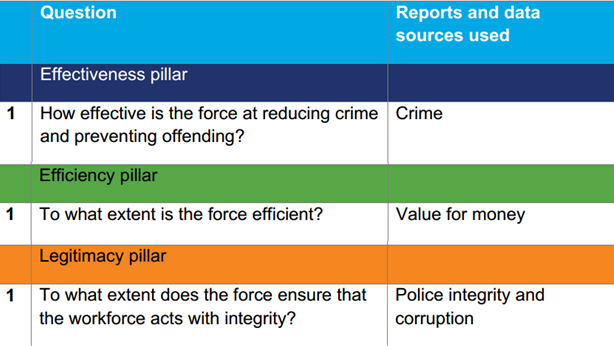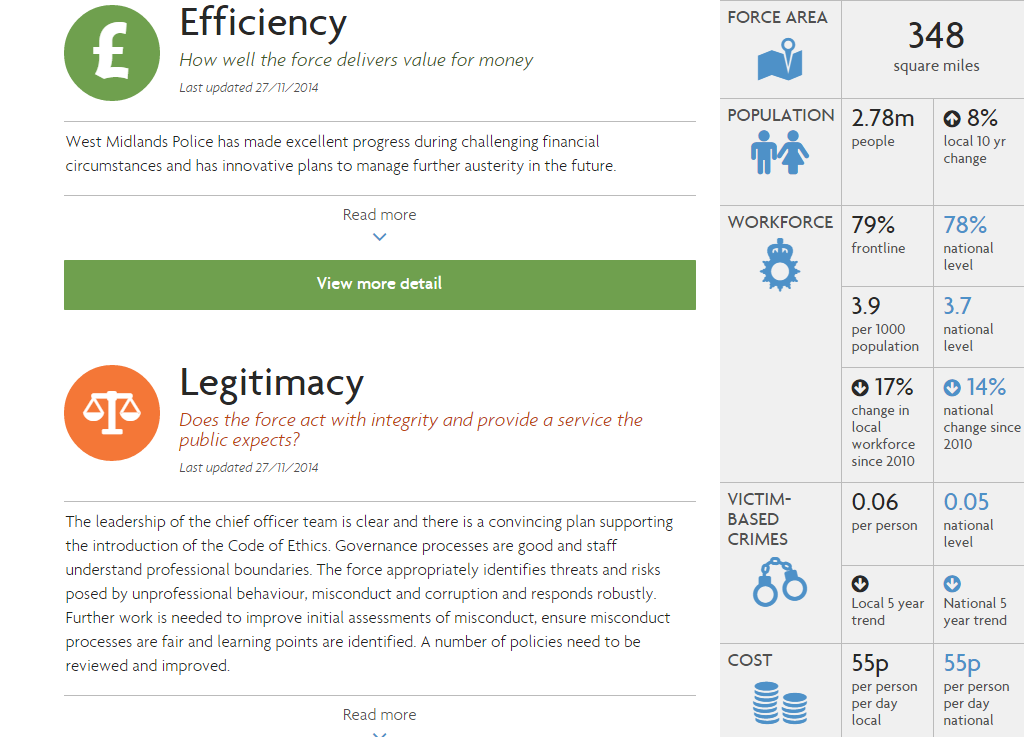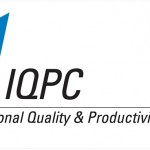Monitoring Police Effectiveness, Efficiency and Legitimacy

“The PEEL reports enable the public to judge our performance as a whole… anything that makes it easier for people to hold us to account and get involved with local policing has to be a good thing”, are the words of Constable Chris Sims – West Midlands Police Chief, in reference to the performance report released by Her Majesty’s Inspectorate of Constabulary (HMIC).
HCIM is in charge of evaluating police forces’ performance across England and Wales. This evaluation is performed through inspections, monitoring and consultation which are collected in a report called Police Effectiveness, Efficiency and Legitimacy (PEEL). Effectiveness is evaluated in reference to how police forces manage the requests for service, and the efforts they make to reduce anti-social behavior and crime rates. Efficiency is monitored in terms of value for the money, and the legitimacy – in terms of fair, ethical operations.
In order to make accurate judgments, HMIC tracks the performance achieved by police forces throughout the year, and uses a set of questions to guide its evaluation. Some of these questions are “graded judgments”, where the answer ranges from inadequate, requires improvement and good, to outstanding. These questions are grouped into 2 clusters:
- Effectiveness – showing how effective the police forces are at reducing crime and preventing offending, at investigating offending and at tackling anti-social behavior;
- Efficiency – assessing to what extent the police forces take the right steps to ensure a secure financial position for the short and long term, and to what extent they have an affordable way of providing policing.
The other type of questions in the report require more complex answers. They are again, clustered in 2 groups:
- Effectiveness – evaluating how effective police forces are at protecting citizens at great risk of harm, at tackling serious, organized and complex crime, and at meeting the commitments under the Strategic Policing Requirement;
- Legitimacy – showing what the public perceptions of the police forces are and, to what extent, the forces are able to properly respond to calls for service, to provide data at high quality and to ensure the workforce acts with integrity.
The entire methodology used to assess police forces’ performance is available on the HCIM website, which provides further details about how data is retrieved. In the table below, the data sources used for each of the 13 questions in the report is presented.
Before having such an approach towards evaluating performance and making results available for the public, HMIC only used to monitor police forces data and carried out inspections on specific areas, the so-called thematic inspections. The value added by the PEEL reports consists not only in a higher transparency towards the efforts and the progress registered by police forces, but also in a comprehensive evaluation of their performance by having a rounded assessment of what they do.
First PEEL reports were made available this year, on November, making possible for residents to check police forces’ performance over the last 12 months, and to compare results across country.
In the case of West Midlands Police, for example, the first PEEL report showed that, in terms of effectiveness, it managed to reduce crime, prevent offending and tackle anti-social behavior: “Crime in the West Midlands has fallen in line with the rate in England and Wales but the level of anti-social behavior is lower (than elsewhere).”
In what concerns efficiency, the police force carries out its responsibilities in an outstanding manner, by “delivering excellent value for money”. The last pillar, legitimacy, showed that West Midlands Police acts fairly in its practices, having “good crime-recording procedures in place when receiving reports of crime“.
For each of the 13 questions, further details are available, as well as documents that support data. This way, each police force has a thorough evaluation of its performance, and it can compare its performance with the one achieved by other police forces.
References:
- Her Majesty’s Inspectorate of Constabulary (n.d.), What is PEEL?
- Her Majesty’s Inspectorate of Constabulary (2014), The first PEEL assessment
- Her Majesty’s Inspectorate of Constabulary (2014), PEEL 2014 methodology
- Her Majesty’s Inspectorate of Constabulary (2014), West Midlands
- West Midlands Police (2014), West Midlands Police praised in new ‘at-a-glance’ performance reports
Image sources:
- Her Majesty’s Inspectorate of Constabulary (2014), PEEL 2014 methodology
- Her Majesty’s Inspectorate of Constabulary (2014), West Midlands
- 4FREEPHOTOSS

Tags: Government - Local performance, Performance in United Kingdom, Performance in Wales, Performance Measurement







